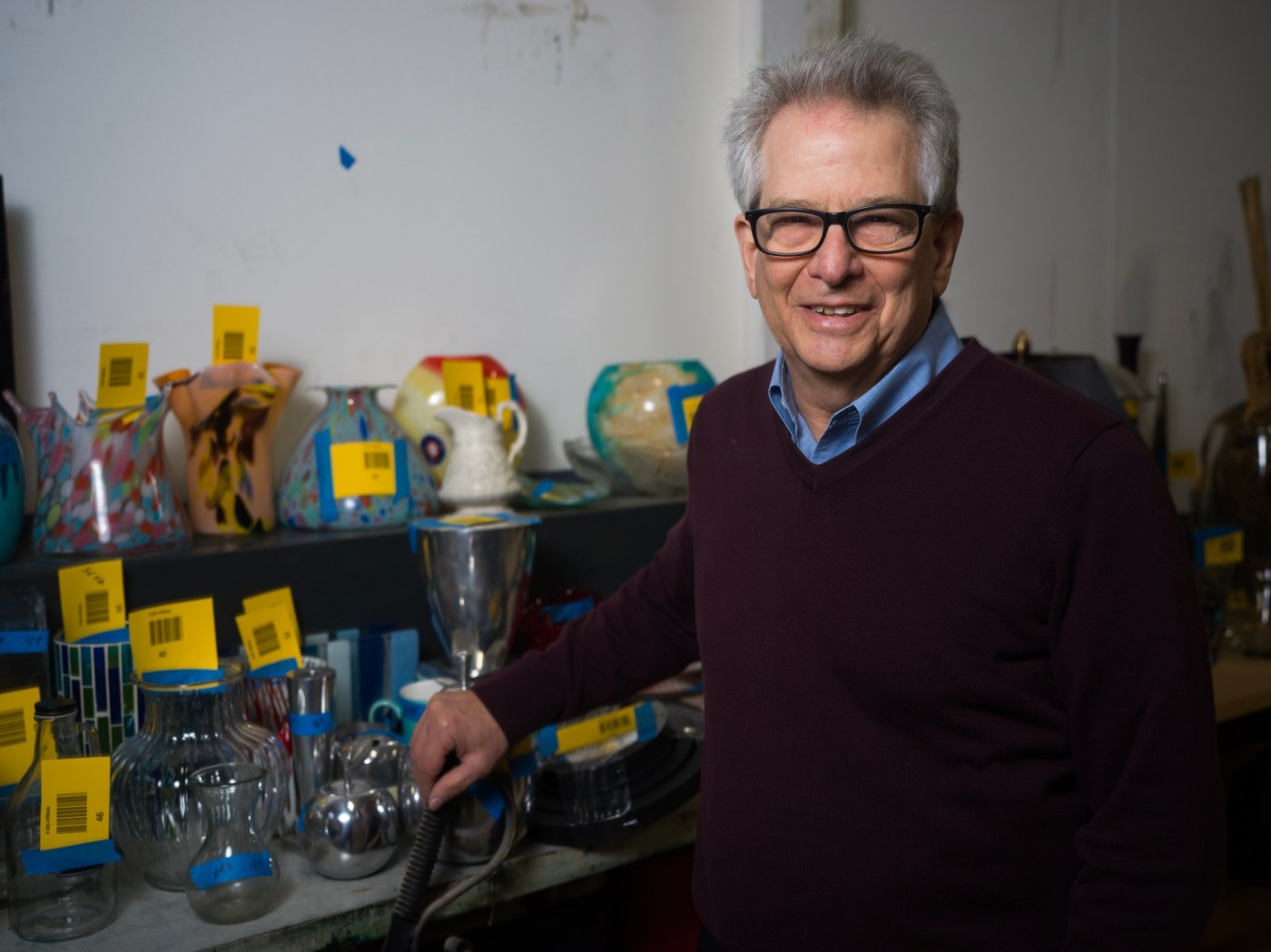Kelly Smith | Star Tribune (TNS)
An Minnesota nonprofit leader hopes to “revolutionize” charitable giving with a new platform for people to trade household items they no longer need, resulting in a donation to a nonprofit.
Think Buy Nothing meets GoFundMe.
Joel Ackerman, a former UnitedHealth Group information technologies executive who’s worked at numerous startups, was inspired by a Canadian man in 2005 who got international attention after trading a red paperclip for progressively more expensive items until he landed a house in a trade.
He “essentially created money out of nothing; out of a paperclip, he got a house,” Ackerman said.
He mimics that concept in his new RedLadder platform — but with a charitable twist. RedLadder, which is being publicly unveiled May 1, is an online marketplace for people to trade items they no longer need — from a vintage guitar and jewelry to a refrigerator and foosball table. One person donates an item and another person can get it by trading in a higher-priced item, and so on. The trade sequence, or ladder, ends with RedLadder selling an item and donating the cash proceeds to a charity designated by the initial donor.
“Not only is it keeping stuff out of landfills … it’s helping build up charitable organizations,” Ackerman said. “It is actually creating new money for philanthropy.”
Joel Ackerman, a former UnitedHealth Group executive and start-up founder, was inspired by a Canadian man who started with a red paperclip, trading it up with increasingly expensive items before he got a house. Ackerman mimics that concept in his recently launched RedLadder organization, but with a charitable twist, in Edina, Minnesota, on April 15, 2024. (Richard Tsong-Taatarii/Minneapolis Star Tribune/TNS)
The platform taps into the growing sustainability movement of reducing waste like Buy Nothing groups, where people offer up their unneeded items for free, from furniture to knickknacks. It also comes at a critical time for nonprofits facing rising expenses and declining donations, struggling to find new ways to drum up revenue to fill the financial gaps.
Nonprofits are grappling with donor fatigue and decreasing corporate giving. In a survey last fall by the Minnesota Council of Nonprofits, a third of respondents reported that donations and foundation grants have declined.
Individual giving decreased in 2022 by 6.4%, with Minnesotans donating $5.3 billion, falling closer to pre-pandemic levels, according to the Minnesota Council on Foundations.
“It seems to be a shrinking pool of money that doesn’t have a solution in sight,” said Ackerman, who has volunteered on several Twin Cities nonprofit boards. “Donors don’t want to attend another gala. We need to find a way to energize and add fuel into the whole (philanthropic) ecosystem.”
Other local efforts have started up in recent years to boost philanthropy in new ways.
When the COVID-19 pandemic shuttered in-person events in 2020, Athletes For MN Kids, a north metro-based nonprofit, couldn’t hold its usual golf tournaments and gala.
The founders — former Wild player Jason Zucker, former Vikings player Kyle Rudolph and two Minnesota entrepreneurs, Joel Kunza and Jon Walburg — created Alltroo in 2021, a website where people can donate to a charity and enter sweepstakes contests, such as winning VIP access to a concert or meeting a pro athlete.
In nearly three years, Alltroo has raised $5 million for charities, Walburg said. The four founders aren’t taking a salary and Walburg said the organization took a $1 million loss last year. But they’re growing the business, which now has 17 employees and is working with music and Hollywood celebrities.
Walburg said Alltroo aims to raise $10 million this year and can reach a broader audience than traditional fundraising events.
“If you’re doing a golf tournament, you only have room for 50 people. Or if you’re doing a gala or an auction, it’s only the people in the room,” Walburg said. “Our goal is to capture a whole new generation of donors who don’t typically donate to charity.”
In Rochester, Chris Wall started 4Giving in 2017 for schools and nonprofits to fundraise online for free. He said 20,000 donors have supported 1,100 organizations so far, including Rochester schools’ sports teams.
After seeing a church passing around a bucket to collect spare change and cash to buy a new air conditioner, Wall launched 4Giving so organizations could share a QR code for donors to give online.
“We want to make it easy to donate,” said Wall, who runs 4Giving as a volunteer gig.
RedLadder offers a new angle on digital fundraising, Ackerman said, by trading items for free.
“It’s a great experiment; no one has done this before,” Ackerman said. “We’re leveraging technology in an innovative way to do something good for society.”
Since soft launching in February, RedLadder donors have added about 100 items worth at least $20 that will benefit 31 churches and nonprofits, mostly in the Twin Cities. So far, none of the ladders have closed out to donate to a nonprofit, but Ackerman said he hopes the number of items, trades and donations will increase starting in May.
Related Articles
Netflix is the dominant streaming service. So why is it changing its model?
Magid: Fixing a slow internet connection
California’s fast food prices rose 7% before new $20 wage, No. 1 jump in US
Who owns businesses and rentals in California? A lawmaker wants the public to know
Redwood City moves to close Broadway to vehicles permanently
He said he’s using artificial intelligence to help assess when to close a trade ladder, with RedLadder selling the item. Ackerman is running RedLadder by himself as a volunteer, part of a nonprofit he started a few years ago. Ackerman is paying the fees and costs to run RedLadder out of his own pocket, he said, but he hopes to eventually draw a salary and pay for employees with a portion of the trade sales.
CaringBridge, the Bloomington, Minnesota-based free health journal website, encouraged its employees to use RedLadder. At CaringBridge, where Ackerman was a former board member, about a dozen employees have donated items.
“It’s a really clever idea,” said Stephanie Schmid, CaringBridge’s chief growth officer.
CaringBridge has long relied on online donations, so Schmid said they’re looking for new ways to fundraise so they can expand staffing and technology, starting in-person fundraisers last year and applying for more grants. RedLadder is another new way to spark donations, she said.
“It’s a really innovative solution both for the community and for nonprofits,” Schmid said. “I’m excited to see where it goes.”
©2024 StarTribune. Visit at startribune.com. Distributed by Tribune Content Agency, LLC.












